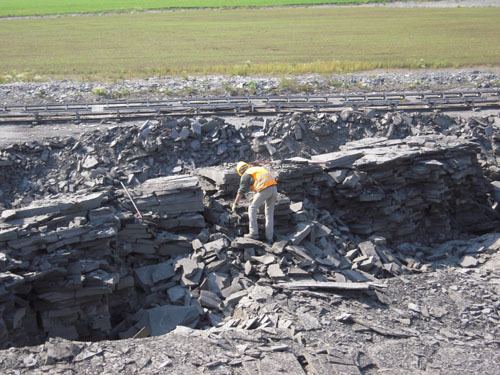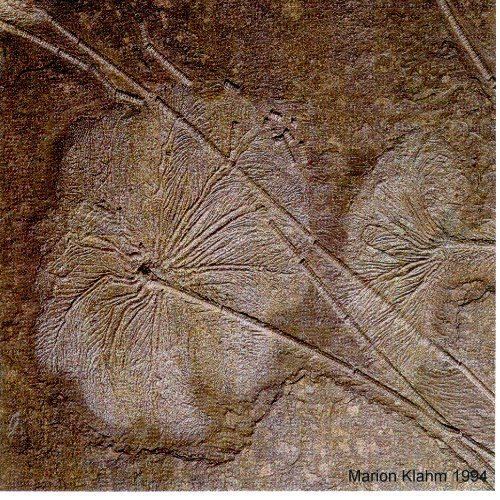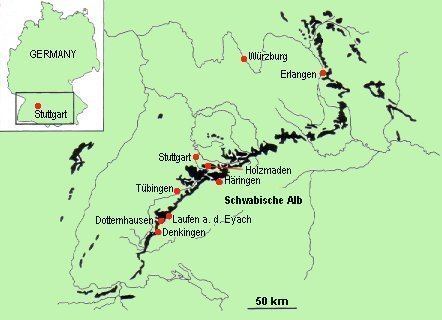Primary Slate | ||
 | ||
The Posidonia Shale is a Lower Jurassic geological formation of south-western Germany, including exceptionally well-preserved complete skeletons of fossil marine fish and reptiles. The Posidonienschiefer, as German paleontologists call it, takes its name from the ubiquitous fossils of Posidonia bronni that characterize its fauna. The formation comprises finely laminated layers of oil shales formed of fine-grained sediments intercalated with bituminous limestones and crops out in a number of locations in southwestern Germany, although most remains are from near the village of Holzmaden. The European oil shales deposited on a sea floor during the Early Toarcian in the ancient Tethys Ocean are described as being deposited in an anoxic, or oxygen depleted, deep water environment, although the details of the depositional environment are the subject of debate by researchers of the formation.

In addition to their Posidonia bronni, the shales contain some spectacularly detailed fossils of other Jurassic sea creatures—ichthyosaurs and plesiosaurs, spiral-shelled ammonites and crinoids, or sea-lilies.





